
When we received some news about Garmin’s latest GPS, dubbed nüviCam LMT, in our press-release inbox the other week, I decided to take a closer look. Why? What does this have to do with Ausdroid? Well, it’s a GPS and dashcam in one, and (when tethered to a compatible Android device or iPhone) it becomes rather intelligent too. Plus, having a GPS in your car is kind of like having a tollway tag these days, so I figured let’s take a look. So we did.
Firstly, what do Garmin say about the nuviCam? It’s billed as a high-end driving assistant, including standard GPS and navigation features, an integrated dash-cam that constantly records in case of an incident, as well as some driver-assist functions like forward collision warnings, lane departure warnings and so forth. General manager, Garmin Australasia, Matt DeMoss said:
“The nüviCam LMT goes beyond helping drivers get from Point A to Point B. The intuitive driver-assist features not only lessen the stress of getting you to your destination, but the nüviCam also provides peace of mind in knowing that your commute is being recorded and can be referenced should you need it.”
Feature-wise, the nuviCam has a 6-inch display, which supports pinch-to-zoom, voice-activated navigation (though more on that later), and of course the dash-cam which records constantly to the included micro-SD card, so you can review footage of your travels later as needed. Smartphone Link is perhaps one of the cooler features, allowing the nuviCam to pair with your Android or iPhone to access real-time traffic and weather information, as well as opening up a whole other group of POIs which you can search for to use as destinations.
So, what’s it like to use?
Smartphone Link
Let’s talk about this feature first, because it works really well, and it’s the link to our mobile technology focus. Pairing is simple and occurs over Bluetooth. You’re instructed to activate Bluetooth discoverable on your handset (which is often as simple as opening up Bluetooth settings, and sometimes clicking on a ‘make discoverable’ button). The nuviCam will connect to your phone, and your phone will firstly confirm the PIN number displayed, and then ask for access to your contacts. This is because the nuviCam can control your phone, initiating and answering calls, and accessing your phonebook makes that rather more useful (though you don’t need to activate that feature).
We discovered a bit of a hiccup in this process; to use the full Smartphone Link features, you need to install that app on your phone before you pair it with the nuviCam, otherwise it doesn’t quite work properly. However, after figuring that out, everything worked as advertised.
The Smartphone Link provides a number of great benefits, including near real-time traffic information, including delays, accidents, lane closures, road closures and more. This is perhaps the most noticeable feature, and it’s significantly more detailed (and up to date) than using the traditional radio-based traffic receiver, though you can opt to use that with the nuviCam as well (or instead).
Besides traffic, the link gives you access to weather information, which really isn’t that wonderful, but more useful is access to Foursquare, and its library of POIs. No matter how complete a GPS manufacturer is with their inclusion of POIs, there’s always going to be things missing.
For example, the nuviCam didn’t know where my son’s daycare was, but Foursquare did, making it a very quick process to find. Businesses which come and go are also harder to find using built-in POI listings, but Foursquare finds them instantly. I thought ‘Foursquare? Who still uses that?’, but now I know the answer — I still use that, and I use it to find places to navigate to.

The best bit? You don’t have to specify that you want to search Foursquare or the internal POI listing; you just search for whatever you want, and search results are returned from both.
Answering phone calls with the nuviCam isn’t really the happiest experience; the user interface is great, but the speaker and microphone on the GPS aren’t crash hot; it’s a bit quiet, and I had to speak quite loudly to be heard. Using the car’s built in Bluetooth hands-free was much easier and more productive.
Driver Assist features
Front collision warning and lane departure warnings are something that your fancier automobile can do for you already, but most of us in the real world can’t quite afford (or justify) cars with those features. They’re just a bit too expensive. Well, the nuviCam brings you those features for whatever your choice in car, but as good as they sound, they don’t always work too well.
These features work because the nuviCam has a built in camera (hence the name). However, unlike warning systems on some cars, the nuviCam has but one camera, and you can mount it basically wherever you like in the car — on the right side of the wheel for easy accessibility, in the centre for ease of use by your copilot, or anywhere in between.
Because the GPS can move, if you push it too hard for example, you always need to make sure the camera is well aligned, and (when on a straight stretch of road) it should be aiming at the centre of the lane a few metres ahead of your car (as you can see in the photo above). Keeping the camera properly aligned is a bit tricky though; if you take the GPS off the windscreen when parked, which is always a good idea, you have to realign it when you put the GPS back on the window to make sure it’s lined up. If you don’t, not only will the dashcam footage not be as good, but the driver assist features will get very twitchy.
Even when properly aligned, I found the front collision warning was like a nervous parent teaching a 16 year old son how to drive for the first time. If the nuviCam had hands, it’d be grabbing for your handbrake frequently, and scaring the living crap out of you. This is what it did to me; all too often, the front collision warning fired when I was nowhere near the car in front, and the car in front was accelerating rather than braking.
It seemed to be somewhat accurate when it came to detecting braking cars in front, and on a couple of occasions it noticed the issue before I did, and for those situations, I’ll forgive it an awful lot of false positives. After a while though, the feature became a bit of an annoyance, constantly chiming away at me when I was stuck in slow moving traffic. When it becomes a distraction, it’s probably time to turn it off.
The lane departure warning worked better, but still had some issues. It only works above 65 km/h, so in practice, B roads and highways. On Sydney’s motorways it worked surprisingly well, and quickly, notifying me that I was drifting before tyres even crossed lane markings, but on some of Sydney’s shabbier roads, where there are lots of cracks ‘mended’ by pouring tar into the cracks, the nuviCam liked to classify those long streaks of tar in the sun as lane markings, which had it setting off warnings when I was driving in a straight line. That feature, too, found itself disabled as it was more of an annoyance than a useful aid.
I think a lot of this depends on where the nuviCam is placed, and how much you prefer to be alerted too much, than not enough. For me, it became a distraction, but for others it might be a welcome aid. That’s the benefit of being able to turn it on and off.
Navigation
This probably is the most important feature of the nuviCam because it is, first and foremost, a GPS. I’ve found Garmin’s in-car GPS units quite good, and I prefer them over some other models from TomTom and Navman for example.
The layout is nice and clean, and it doesn’t take too many taps to access most of the device’s features. The maps are easy to read, and directions nice and clear. The inclusion of a very natural-sounding voice for reading directions to you is a welcome thing, and most pronunciations are spot-on for the Australian audience, though some streets managed to trip it up — pronouncing Pittwater should be rather easy, but it came out more of a Pitt wahh-ter. Still, I knew what it was saying.
My older Garmin (a 2495LMT) struggled a bit with navigation, because even though the maps are kept up-to-date by Garmin, the POI database wasn’t too complete, and quite often I found myself looking for addresses on my phone so I could type them into the GPS. Counter-intuitive, and slow.
Being able to access Foursquare, as noted above, made the navigation experience much easier. I was able to find places to go very easily, and most importantly, quickly. It’s not always super smart though; many Foursquare POIs are defined by Lat/Long rather than street addresses, leading to the odd situation where the nuviCam will navigate you to the rear of a property (where there’s no access) instead of the proper street address where the entrance to a business actually is.
However, that’s a small price to pay for navigation that can find virtually any POI without having to resort to your phone.
While navigation is running, the display is minimal. You get your standard 3D map view (which you can change to 2D if you wish), a speed read-out, current speed limit, direction of travel, and time to arrival. Most of this you can configure and swap out, to make for a custom dashboard. I actually feel the 2495LMT does a slightly better job of this configurability than does the nuviCam, but it’s still pretty great. The big display makes seeing details very easy, and typing even easier; the smaller display on the 2495LMT for example makes typing a real pain in the ass.
As a navigator, the nuviCam is a joy to use really. I initially thought the sheer size of the unit would put me off, but the versatile windscreen mount allows you to place it quite low so that it doesn’t obstruct your vision, and it’s in an ideal place to reach easily to change things if needed.
My only major gripe is the inclusion of a silver button on the top edge of the unit; this can be used to tell the dashcam unit to record the last few minutes of video and next few, as a permanent record. Something quite useful if you see something that you need to make a note of, or should save (e.g. someone else being hit by a car or whatever), but at the same time, that big silver button likes to reflect an awful lot of sunlight, and it’s a rather significant distraction on my windscreen.
My advice to Garmin would be to replace that silver button with something black instead, and my advice to anyone buying this unit would be to grab a black marker or some gaffer tape and cover that silver button right up so it doesn’t distract you as it did me.
Dashcam
As a dashcam, the nuviCam just works, provided that the camera is properly aligned as mentioned above. By default, the nuviCam records constantly, and saves a buffer of video to your device. By default, this video isn’t permanently stored; it stays on the device for a couple of days before getting wiped, but you can easily save footage permanently at the time – by tapping that silver button on the top – or after the fact by browsing saved footage and permanently saving it.
Video is marked with your current location (in lat/long), current date and time and your speed of travel, and it’s saved in convenient MP4 format which plays back on just about any modern device.
The automatic event recording can be a little twitchy. I found that it activated by hitting a speed-bump too quickly, or by allowing the car to drift slightly to the left on a motorway and hitting the vibration-inducing lane marking. However, there’s no actual harm in this; like the driver assist features, you probably want the nuviCam to be overzealous rather than missing capturing something important.
If you’re on the road a lot, especially in more populous areas, having a dashcam can be a wise investment, and if you’ve already got a GPS, having two devices hanging off your windscreen can be quite a distraction, and thus the value of the nuviCam is realised; it does both, in one unit.
With increasing examples of insurance companies and police relying upon dashcam footage to adjudicate who’s at fault in traffic matters, there’s a good argument to have one for your own protection, especially if you’re on the road more than the average motorist.
Conclusion
Garmin’s nuviCam is a great unit. I almost said great little unit, but it isn’t little.
Like I noted above, I’m already a fan of Garmin’s GPS solutions, having purchased one some years ago and used it since. Even if I know where I’m going, punching in the destination gives me traffic information and more, and that can be worth the price alone living in a crowded, busy place like Sydney’s northern suburbs.
Would I recommend the nuviCam? Absolutely. It receives lifetime maps upgrades from Garmin for free, as well as lifetime access to traffic via the included radio receiver, or via Smartphone Link, whichever you prefer. Some other providers charge extra for maps updates, and others require a smartphone to receive traffic information, whereas Garmin doesn’t (though it will certainly use the smartphone if available, and provide a higher quality traffic feed if you do).
The price is probably the only thing that will put folks off – at $499, it’s not a cheap GPS by any stretch of the imagination. A basic GPS with maps and traffic will set you back around $150, and the average dash-cam is around the same price. Combined, $300 is well short of Garmin’s $499 asking price, but as noted, you would have two devices hanging off your windscreen instead of just one.
Of course, there’s the growing number of folks who just use their phone as an in-car GPS when needed. Google Maps is free, as is Nokia’s Here Maps. Google offers traffic data too, and it’s fairly close to real-time as well, and it too is free. The maps are constantly updated as well. In fact, the only downside to using Google Maps for navigation is data usage, but there’s ways to get around that as well.
That said, I still prefer to have a standalone GPS in my car; I don’t need to worry about taking it with me, and I don’t have to mount it when I get in the car, it’s just there. I don’t have to switch apps to get it working, and it doesn’t use my mobile phone data. I think there’s still a market for the standalone GPS, but it needs to offer a clear value proposition to be worthwhile.
Likewise the dashcam; there are apps that will turn your mobile phone into a dashcam, and plenty of them are free. Having a standalone unit does still offer some benefits; your phone isn’t being used and you don’t need to get it out of your pocket when you enter the car. Some people do this as a matter of course, so for them, there may be little benefit.
If you’re a frequent road user, something like the nuviCam is a great idea. If you’re the weekend getaway type, and don’t use your car for commuting during the week, it may not be worth the investment, though you’ll definitely still find it useful.
Garmin’s nuviCam LMT is available in retailers today for a recommended retail price of $499. Our review unit was supplied direct by Garmin Australia.

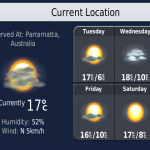

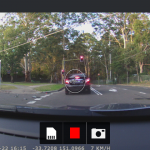
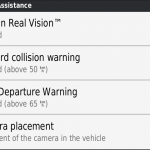
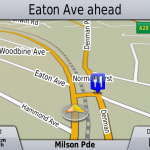
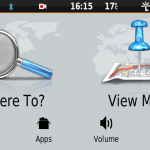
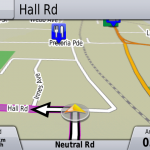



Round 2: I upgraded my 2689 to this unit. GPS: Fabulous. Accurate, sensitive and the routing algorithms haven’t let me down yet. Driving aids: Works well at night (I don’t drive much in the daytime, so I’ve left LD alerts on). Collidion avoidance works well, with sensitivity set to medium. Low sensitivity is too slow to alert, and high sensitivity is like the anxious parent trying to teach a teen how to drive. The augmented reality view on certain streets is really cool. I bought the unit at 20% off from JB Hifi, and for 400 it isn’t a bad… Read more »
Interesting. But I was waiting for you to tell us more about Voice Activation as promised in 3rd para. I was hoping to hear that the new VA is no longer a joke and has become usable and given the much larger vocabulary of the old 800 series.(Though that was functionally much worse than the recent 2000 and 3000 series.) Having purchased at least one of each year’s new Garmin releases I think I am finally getting the message that one step forward and two steps back and treating buyers as complete idiots has finally lost me as a customer.… Read more »
Voice recognition is pretty bad still on my 2689. It struggles with Australian suburb names. For example, in VIC, Sunshine worked well…I could never get it to recognise Footscray, Craigieburn, Berwick…it only worked with names drawn from the dictionary, if at all.
Plus the fact that the mic is hopeless, it really doesn’t work well at all.